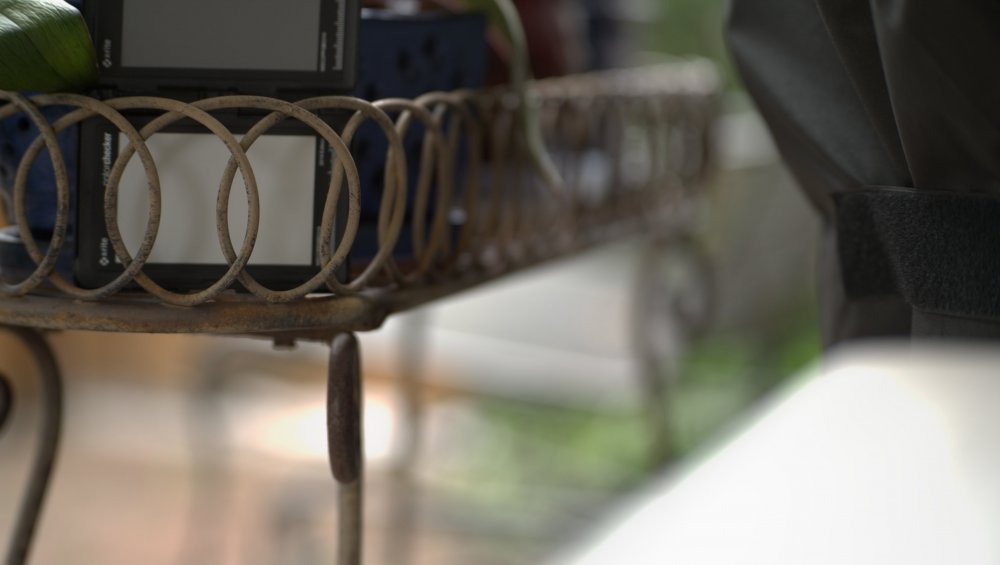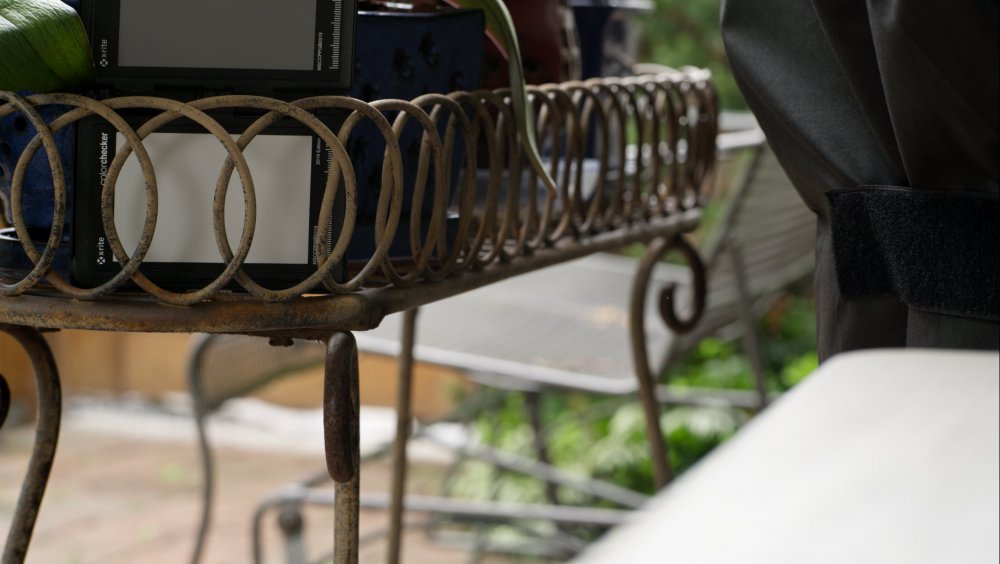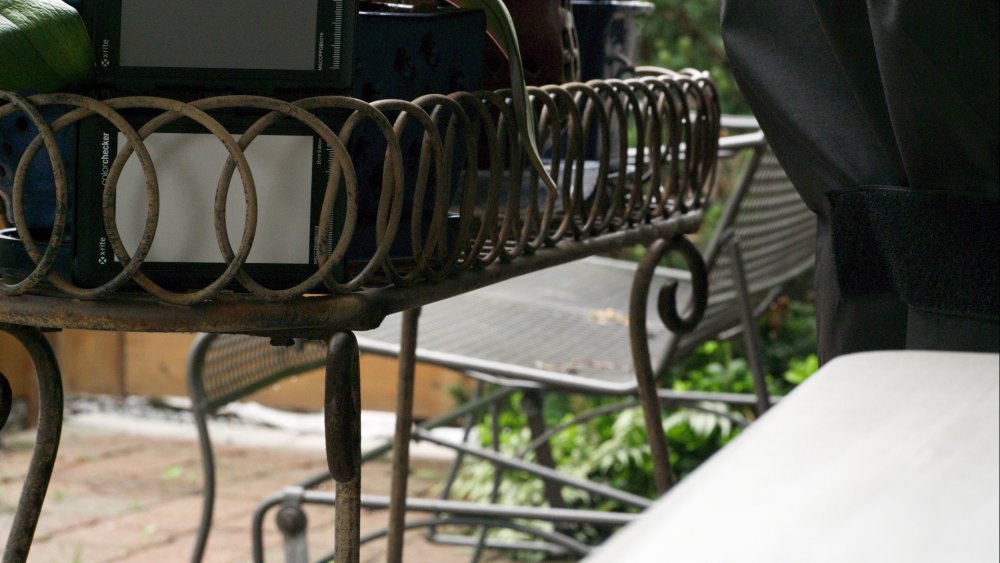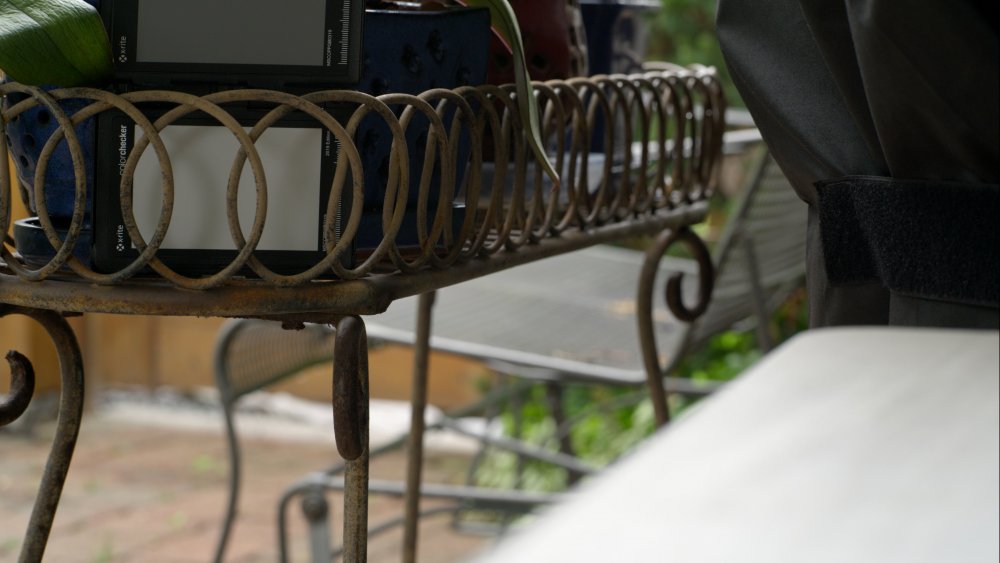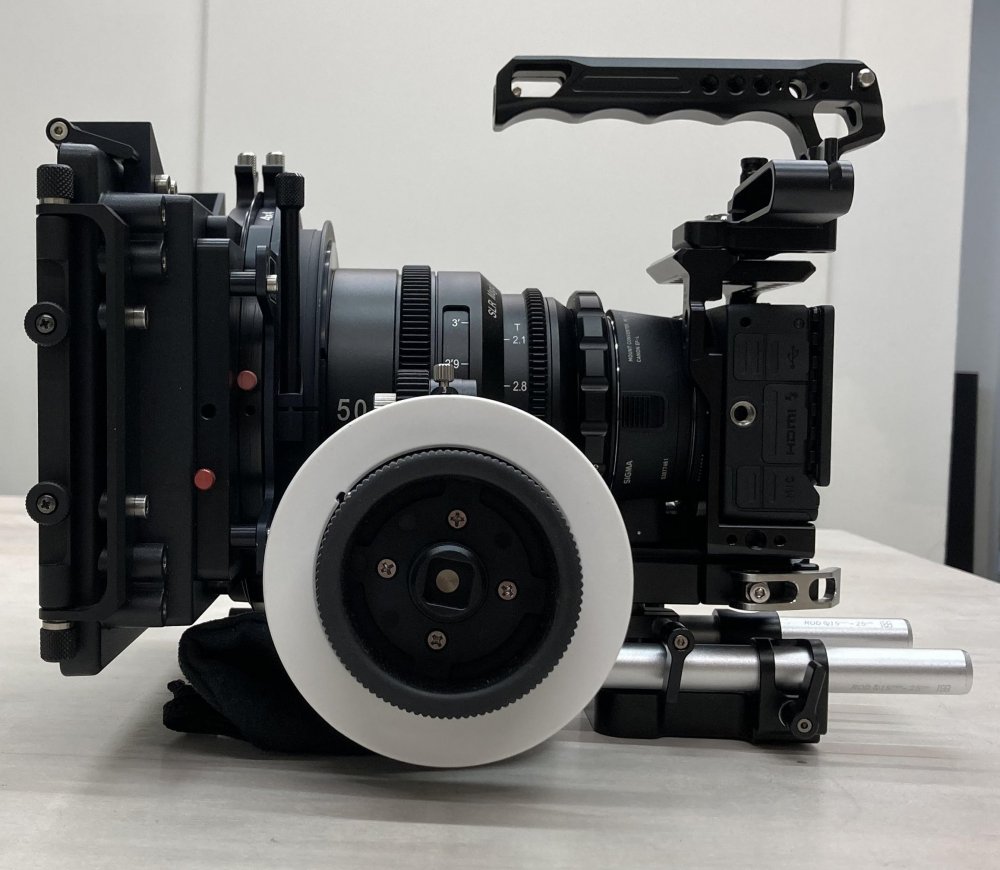-
Posts
54 -
Joined
-
Last visited
Content Type
Profiles
Forums
Articles
Everything posted by Ryan Earl
-
As far as Cineform serving as prior art for RED's patent, there is the possibility that both were developed from JPEG 2000 separately and both qualify for patents relating to camera systems. The SI-2K camera patent might integrate Cineform, but it's hard to tell. I remember reading that Cineform was created to get around IP from other companies so RED could have also used JPEG 2000 and just slightly 'got around' Cineform to steer clear of them. Or maybe there was a deal that RED would modify Cineform and would pursue a patent with Cineform's approval. I'm just speculating. . . It's still more likely to me, since Nikon literally has 20,000 patents https://insights.greyb.com/nikon-patents/ that there would be some cross patent infringement that would allow Nikon to continue with ProRes RAW. It happens across all industries, I'm not sure RED is a villain. How many patents do they actually have? Just one very key patent it seems. If anything Nikon is knowingly infringing on RED's patent which would put them as the unethical party since RED's patent was granted. PXG is a golf equipment maker and started filling their metal irons with a plastic polymer and received a patent for it. Taylormade later made irons filled with 'speed foam' and PXG sued Taylormade. Then they reached a settlement because PXG violated some Taylormade patents. Another company, Ping, had already been using plastic inserts in irons years before... https://golf.com/gear/taylormade-pxg-irons-settlement-lawsuit/
-
I've been using the Komodo for the past 6 weeks or so bare bones as a B cam for corporate. I mostly leave the Canon 35mm F2 IS on it and sometimes a 100mm Macro. It really is nice to use, even for corporate where it's just set up for another angle. The battery life on 2x Canon BP-975 is actually pretty stellar. I think I've gotten almost the full advertised 6 hours of run time. The file sizes are decent and the quality is high and malleable even in 6K LQ. The little LCD is really usable and I haven't blown any exposures because of the traffic light system and the color reproduction is excellent with RED's lut or the REC709 decode for quicker projects. I'm going to add the RED handle and a 5" monitor for when I want to get the camera up for higher angles. The internet tests show it with a dynamic range lower than the manufacturer's claims but I don't feel like I need anymore then they are delivering. The roll off is just really nice. The images hardly need any work. Everything they've done with the image quality makes the price justified over the $2,000 - $4,000 range cameras for me. Though financing it is another thing. . .
-
RED, to my understanding of reading the patent, do not have a patent on lossless raw or uncompressed raw like the cDNG coming from the Sigma FP for example. They’ve defined it as ‘compressed’ and that seems to be where it hangs up other companies and codecs like cinemaDNG 3:1, 4:1. And likely compressed raw 4K and over as I’ve read Jim Jannard’s comments when Red sued Sony. For patent infringement or a patent claim, RED suing Sony or Nikon is more about the way the marketing is presented to the ordinary observer or average person who’s using the cameras. Another company claiming a cinema camera at least 24fps at 4K with compression options like those in Nikon with ProRes Raw. On its face those claims directly compete with RED, specifically the RED ONE going back to 2007, and their subsequent cameras. They’ve had 4K compressed raw at 24fps for a long time! The achievement / combination of features that’s being protected is all contained in the RED One. They have a physical working example of their patent made in 2007. When it comes to validating the patent in litigation (RED has to reprove validity if they begin litigation as they did with Sony), or invalidating it as Apple tried to do, or initially awarding the patent, the patent system uses testimony from “a person with ordinary skill in the art.” In this case camera / video engineers who would be responsible for building or designing the camera will attack or defend the patent. Apple just tried to move RED’s priority date forward in a legal trick to make the RED One appear obvious in 2008. Though I suspect it might still not have been by then. The pictures that RED published from March 2007 in their case against Apple were of the engineering team for RED One comparing images side by side of lossless and ‘visually lossless compressed’ raw. Then the RED One was sent on to be field tested with Peter Jackson and pictures of it on set with him. So if it was good enough for Peter Jackson. . So what you have to do is come up with your reasoning on why it would have been ‘obvious’ to ‘a person of ordinary skill in the art’ in March 2007 or before to be able to invalidate the patent. It’s not just that it could exist hypothetically, but achieving a novel method for compression. There was compressed raw stills in the Nikon D2X in 2004 for example. They had uncompressed and compressed NEF. Though if RED considered it prior art to their patent and invented on top of that in a novel way achieving 4K 24fps and ‘visually lossless compressed’ and it was validated by the patent system then what can you do? Nikon wasn’t attempting to compete in the cinema market in 2007. One of RED’s key arguments I believe in the patent is that prior art was not good enough for cinema by not being visually lossless when compressed. I’m admittedly interested to find out how Nikon resolves this.
-
In the US there is a 12 month grace period. You can file after something's been on the market, the patent has a filing date in 2008, but a 'priority date' in 2007. If nothing else you have time to prove that your product is viable before going through the pain and expense of a patent. RED's patent is designated with a "U" preceding the number which stands for 'utility' vs a 'design' patent. Utility patents give their owners broad protection over the use of a new and useful process and they are allowed to invent on top of existing technology which counts as 'prior art.' They disclosed a lot of prior art too referencing other video cameras on the market and stills. Visually lossless compressed raw is certainly not an unpatentable 'abstract idea' to me either because you do have options in camera to choose the amount of compression. The camera is acting on the data physically compressing it in camera. I think the problem is that RED chose to patent it in the first place, as opposed to other companies in the past getting together to form a standards group like JPEG. JPEG is also based on patents too I believe, the companies that helped form it have allowed it to exist outside of patented IP.
-
For better or worse that's what a patent is supposed to do, prevent others from selling what you've patented.
-
That obscures the question of whether or not a company should be able to patent and prosecute others for the inclusion of compressed RAW in a camera. In my view, it's hard to argue reasonably that RED is simply protecting REDCODE by prosecuting others for using their own form of compressed RAW. Are they all doing it the same way? Compressed cDNG, KineRAW, NRAW, ProRes RAW all using the same method? How is the inclusion of compressed RAW in a camera an intellectual property by itself?
-
Nikon patent's relating to image compression that was cited: https://patents.google.com/patent/US6958774B2/en I'm not saying it helps. I've never used one. . . https://www.siliconimaging.com/DigitalCinema/SI_2K_key_features.html I believe the SI-2K did have an internal notebook style hard drive that could be swapped out. They advertised Cineform RAW in camera, "Recording in the CineForm RAW™ Digital Intermediate format records a "digital negative" direct-to-disk, preserving the full dynamic range and per-pixel sensor data in the codec."
-
Yes, the 6:1 compression ratio as originally written is interesting to me too because it already shows that in 2007 RED was looking for a way to differentiate themselves from CineForm RAW in my view. For example they wrote "at least 2K," well if a camera was 1920x1080 that's not technically 2K! So if I'm RED I will patent everything above 2K that is compressed RAW. This was published November 2006, months before RED claimed to have compressed RAW working in the RED One (March 2007): https://www.siliconimaging.com/DigitalCinema/SI-2K_CineFormTech.html CineForm RAW is listed as 5:1 in the chart on the link. "The SI-2K with embedded SiliconDVR records directly to the CineForm RAW™ digital intermediate codec, a powerful, 10-bit visually lossless codec that natively encodes the RAW bayer data from the single-sensor in the Silicon Imaging cameras, and preserves the RAW data at the codec level until the data is "flattened" for the final output."
-
It's interesting to me that Nikon has a patent for image compression in a camera that RED cited in their patent application. https://patents.google.com/patent/US9565419B2/en The other thing I found interesting about all this is that the 'Presler' patent that Apple had tried to use to show that RED wasn't novel was filed only a few days after RED's application. Apple tried to get RED's date moved forward to give Presler priority. https://patents.google.com/patent/US20100111489A1/en With the timing of the two patents being so close anyway I don't see how RED is justified to pursue others so vehemently. BUT the Presler Patent is certainly not as well written as RED's patent since it sounds so much more specific to cinema cameras, 24 frames a second, at least 2K, visually lossless compressed RAW and a 'novel' method for doing it. I'm presuming that patent for Presler would have been the one to use for the SI-2K which recorded Cineform RAW and was advertised as compressed RAW, but the 'visually lossless' part was not emphasized I don't think as well. But wasn't Cineform RAW introduced in 2005?
-
Almost want to get a Ninja V just to see how crazy this is!
-
William Wolowitz came up with the plastic credit card (pre-striping and chip) and the oil companies selling gasoline stole his idea. "Mr. Wolowitz held patents in the field of plastic credit cards, having thought of using plastic cards with raised letters and a machine that could transfer these letters to credit forms, along with the price of the goods purchased. In the 1960s, he filed suit in federal court for alleged infringement of these patents. Eventually, the Golf Oil Corp., Humble Oil Co., and Addressograph-Multigraph Corp. and other companies settled "for a seven-figure amount,"" https://www.washingtonpost.com/archive/local/1978/02/09/william-wolowitz-invented-typing-credit-card-devices/8200d87f-dab0-4bfa-b7c5-7314f35cd2e4/ He also came up with an erasing typewriter ribbon and had to sue IBM when they stole it. RED see themselves as the 'little guy' and maybe rightfully so relative to the earnings of Sony, Apple, Nikon et al.
-
In color mode "OFF" you should get an identical result with BRAW as CDNG, that's what I'm getting. For example, decode the DNG to P3 D60 Linear and transform to BMD Wide Gamut Gen 4/5 - BMD Wide Gamut Film Gen 5 then do a BMD Film GEN 5 to video LUT. Then Decode the same scene shot in BRAW to GEN 5, Blackmagic Design, Blackmagic Design Video and they should match. ISO values should match in the metadata and both won't be editable in the RAW tab.
-
Above link doesn't work, this is the correct one: https://we.tl/t-fLzZl7fRNy
-
As I did the ISO ramp to 12,800 I went backwards to 100, but only 100, 800, 3200, 12,800 I added 5-8 second clips so you can see the noise, though I didn't match exposure perfectly, I was moving the shutter and aperture for approximately middle gray on the card in the right of the frame. https://we.tl/t-squvulFUOY Thanks for your other feedback, I've been testing 3200 ISO in real world daylight scenes with 4 - 5 stops of ND and will try a few 1 stop underexposed along with your findings.
-
I exposed the following frames starting at ISO 100 using false color. I just kept the wall behind the light without clipping and the mask with some clipping, the gray card at ISO 100 is underexposed. Not sure how helpful this will be. . . https://we.tl/t-82kFKys7LH
-
Are you asking for the exposure to adjust with the ISO change? Increase ND for example? I can add some DNG clips, I wanted to check this out for myself, but don't have a Ninja V to compare DNG To ProRes RAW.
-
The checkbox for 'gamut compress' shows up when you switch to the latest ACES version 1.3 It's supposed to help with highly saturated colors / light sources like tail lights I think. I think transforming to Arri Log-C and applying the ARRI LOG-C to REC709 LUT looks good too BTW.
-
This clip is 10 Bit. It's hard to speculate about what's happening. It seems like I should be able to dig out a little more. I haven't encountered that in 12 bit but haven't shot any 10 bit to know if that's more common.
-
Just editing my own comment, I meant to say noise is tolerable to me at 5 stops, then getting ugly at 6 and really bad at 7. But that is from ISO 160 because it happened to be where I started to be able to stop down by 7.
-
Just shoot ISO 800 instead of ISO 100. My example of ISO 800 pushed +2 would be rating it at 3200 ISO but using the lower ISO range instead of switching higher. So there will be at least a visual difference between ISO 800 +2 and ISO 3200.
-
That could be a sweet spot, exposing 3 or 4 stops under at ISO 100 depending on the scene. I've been sticking to ISO 800 and will go down 2 stops before it gets ugly. I made a rough example. I think generally in daylight +4 at 160 ISO can be okay. By 6 stops the ugly noise is very visible at 5 stops and by 7 stops under pretty bad. My lens has veiling flare wide open and pink then stopped down greenish. ISO 160 Base Exposure - False Color "Green" in Upper Left Gray Card - No Push ISO 160 - 4 stops underexposed and brought back ISO 800 - 2 stops underexposed and brought back ISO 160 7 stops underexposed and brought back
-

"Looking" professional and how important is it?
Ryan Earl replied to newfoundmass's topic in Cameras
Yeah, it's really only practical for short periods of time. I'm steady with a 32 - 50mm without jitters. I haven't bought the EVF yet. I like to hold the matte box with both hands on either side to operate and I think the EVF might line up well to where the camera is at least on my shoulder and I can counter weight the back with a v mount battery. The Sigma FP is the only mirrorless I think to have offset their EVF to the left to give you that shoulder position option. Stripped down to just the camera for hand held I've used the Canon 35mm F2 IS and a Hoya screw on Pro ND and that seems to work well too. -

"Looking" professional and how important is it?
Ryan Earl replied to newfoundmass's topic in Cameras
Thanks, did you go with PL mount? I tried the 35mm when it came out in PL and didn't test on larger sensors. -

"Looking" professional and how important is it?
Ryan Earl replied to newfoundmass's topic in Cameras
Does this lens cover the full sensor or are you using a crop mode? -

"Looking" professional and how important is it?
Ryan Earl replied to newfoundmass's topic in Cameras
Yeah, mine is 8 lbs built like this: Follow Focus looks bigger than the camera! It works well on a tripod and slider, then for some quick handheld I pull the follow focus off and operate with my left hand under the rails and adjust aperture and focus with my left thumb and have my right thumb press the false color button. All the weight tips forward though and I have a bag underneath to prop it up on the table. It's really how well you can operate without coming across issues, maybe the matte box and handles would get in the way in some cases and you've leaned into leaving them off to make it smoother for you. Using small cameras definitely gives you a lot of options to make different configurations. And the client has hired you presumably because they've already seen your work.





